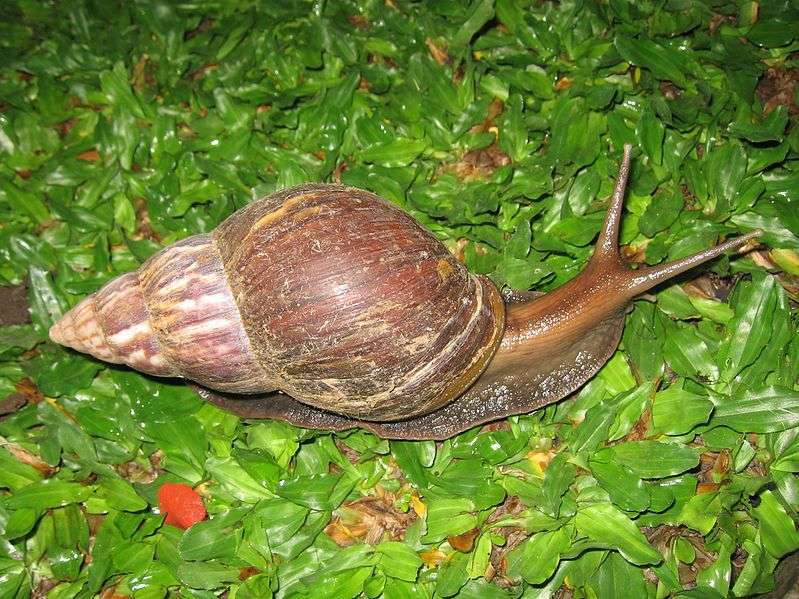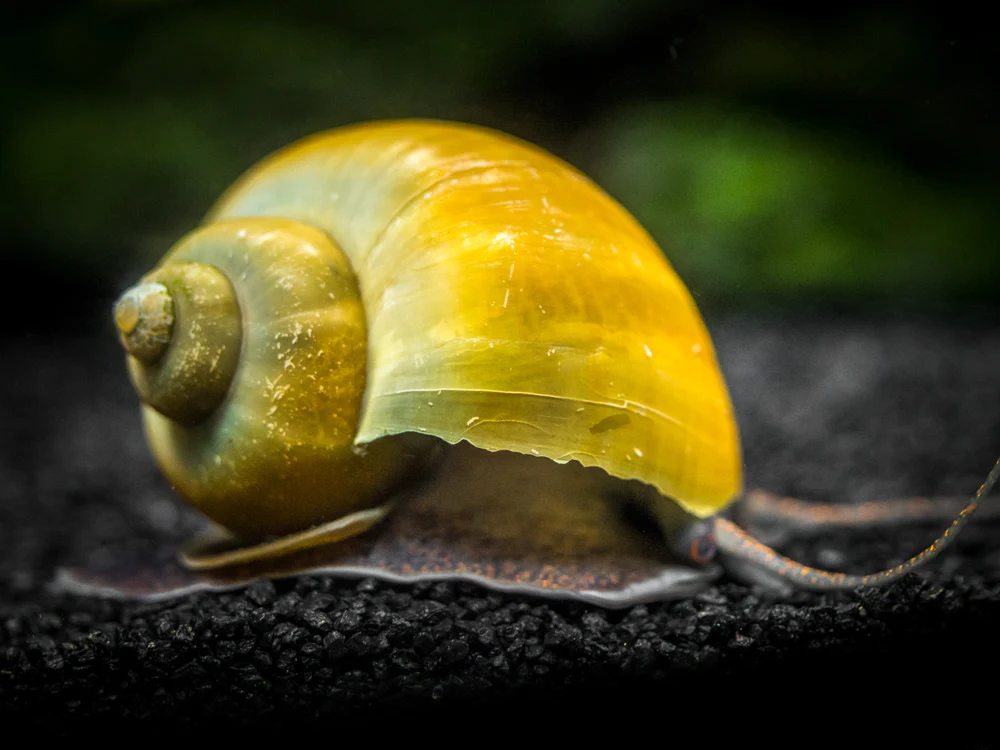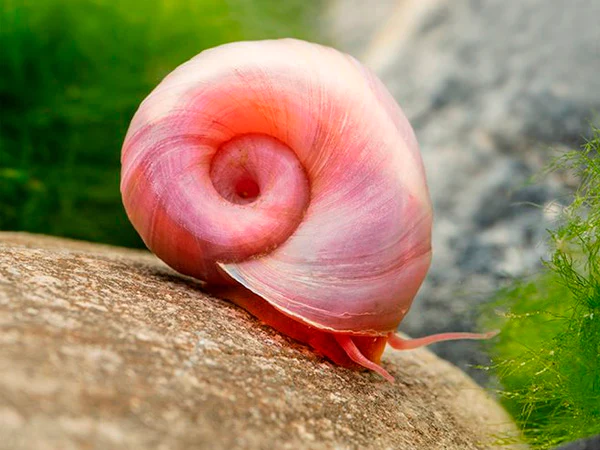
Description
Size: 25 to 35 mm
The garden snail has a big, brown or yellowish shell with lighter flecking and darker, spiraling bands. Its skin is a wet, light grey colour. This snail has a thick, 4.5–5 whorled shell with a rough, wrinkled surface. The lip entirely seals the umbilicus. Wide mouth with a white lip that has swollen.
Origin
Australia received the Garden Snail from Europe. It is almost never found outside of urban areas and is always connected to human populations.
Behavior
To feed and rest during the day in safe areas, like as behind boulders, they emerge at night. The snail retreats inside its shell, which it can shut, if the environment becomes too dry. It can stay in this position for a number of months, if necessary. During the winter, garden snails typically hibernate.
Generally speaking, cornu aspersum are mild-mannered and docile, and they won’t act aggressively towards people, other snails, or animals. When handled, they don’t make any noise and typically keep their composure.
Keeping as Pet

Habitat
Clean the container, then dry it. Ensure that the lid of the container has vent holes that are both big enough to let air in and small enough to keep the snails from escaping. If you don’t have a lid, cut a suitable shape out of cheesecloth or gauze and fold it twice to cover the top of the container. Put your lid or cover aside for the moment. For drainage, add a thin layer of gravel to the tank’s bottom. An inch and a half of soil or soil covered in peat, coir, or spaghum moss should be placed on top of the gravel.
For your new pets, add a shelter. It works nicely to bury a little plastic pot partially in the soil and set it on its side. Another option is to put a piece of bark against the container wall to create a little lean-to. Such a hiding place is beloved by snails.
Water Conditions
pH should be between 6.0 and 8.0, hardness should be between 4 and 10, and temperature should be between 69 and 75 F.
Diet and Feeding
Snail food should be added. Provide as many options as you can. Fruits including apples, kiwis, peaches, blackberries, plums, pears, raspberries, and strawberries are among the many fruits they like. Additionally, provide veggies like lettuce, cabbage, kale, tomatoes, cucumbers, lettuce, and dandelion leaves.
Put some egg shell or natural chalk in the aquarium as well. Snails need a supply of calcium and minerals to construct their shells. Additionally, cuttlefish from the pet store can be given.
After adding food to your snail house, don’t forget to reinstall the cover. Use rubber bands to secure cheesecloth or gauze if you’re using them. You don’t want snails to become loose inside your home, injure themselves, or spook visitors.
Table





